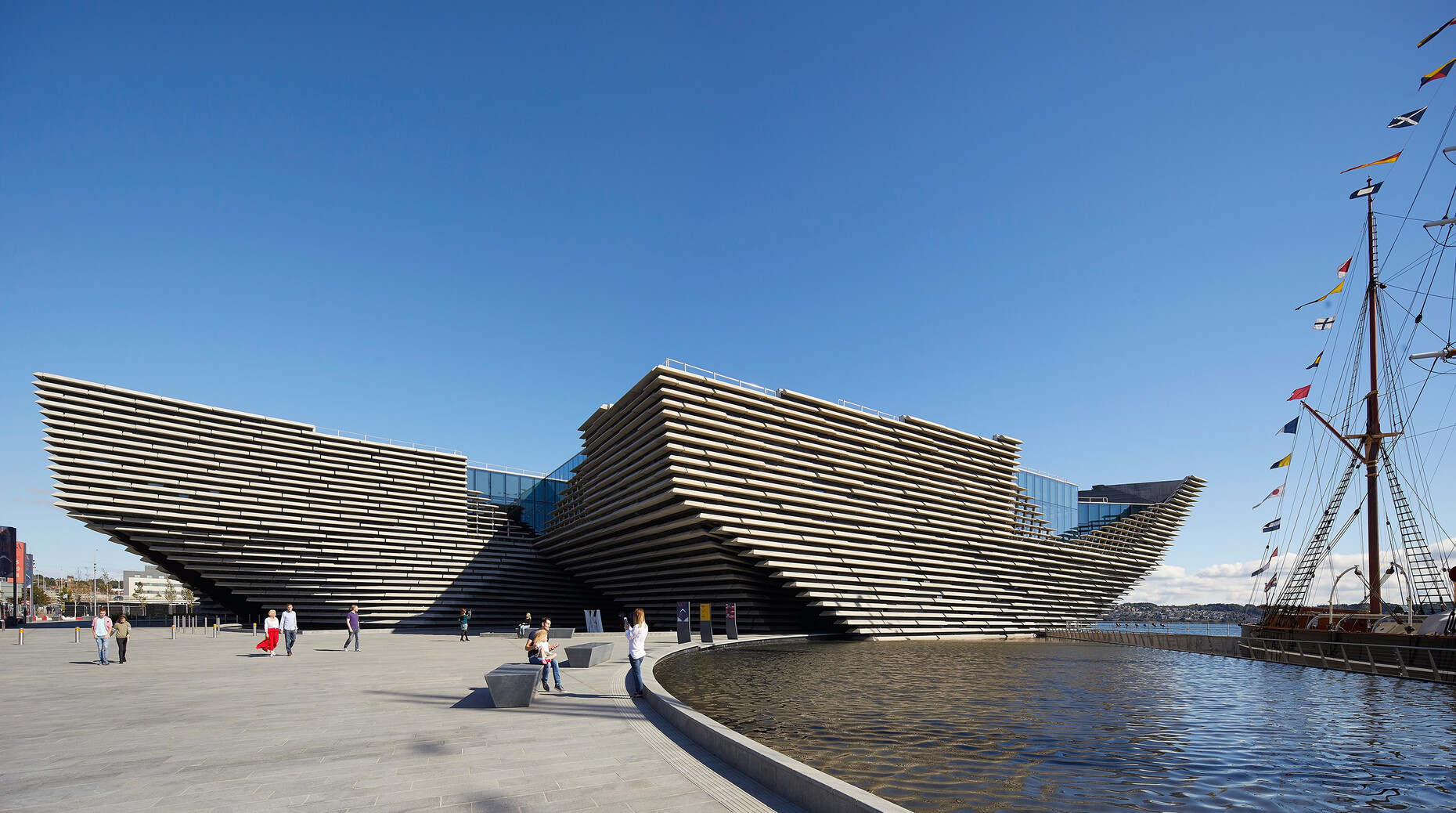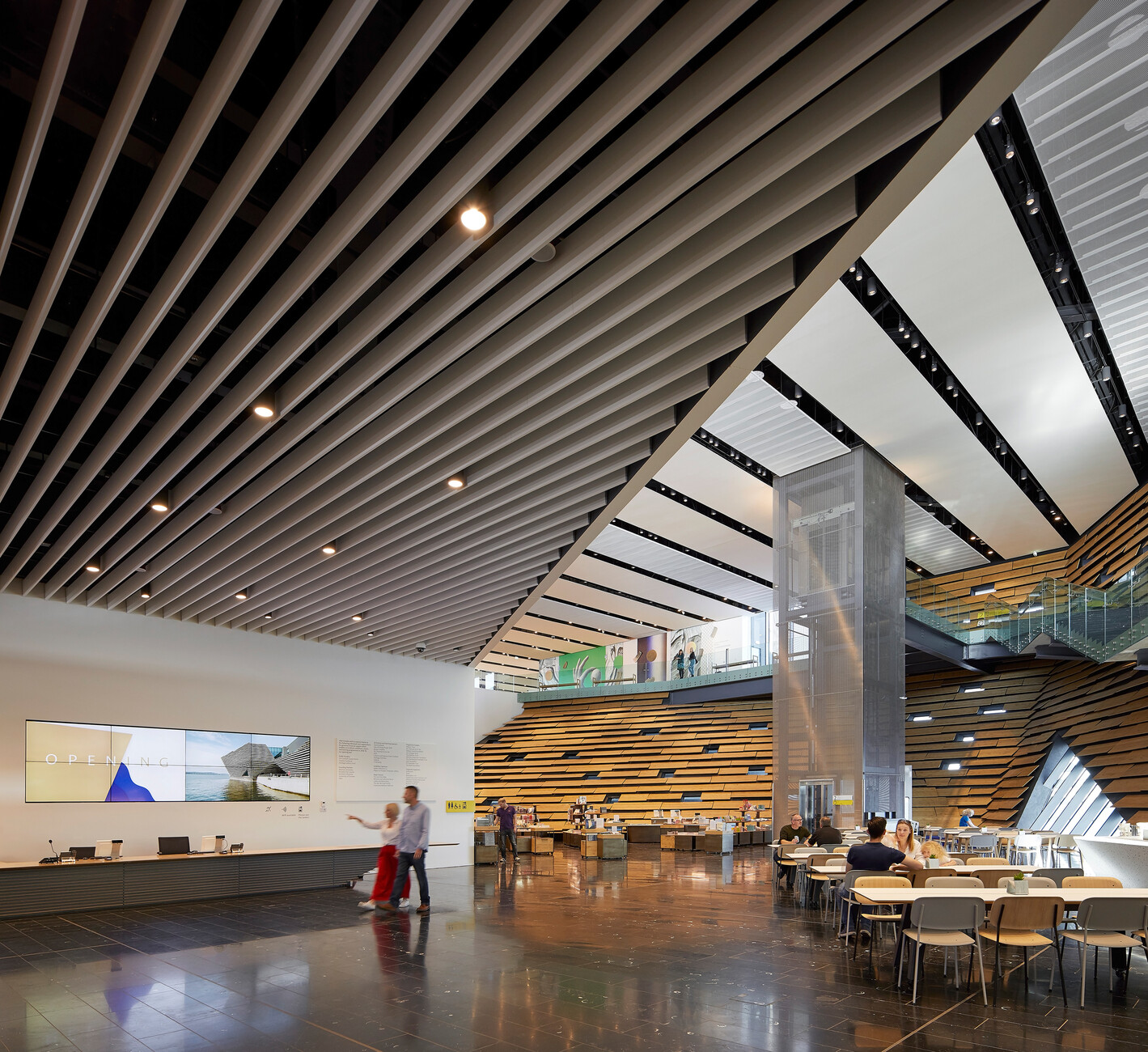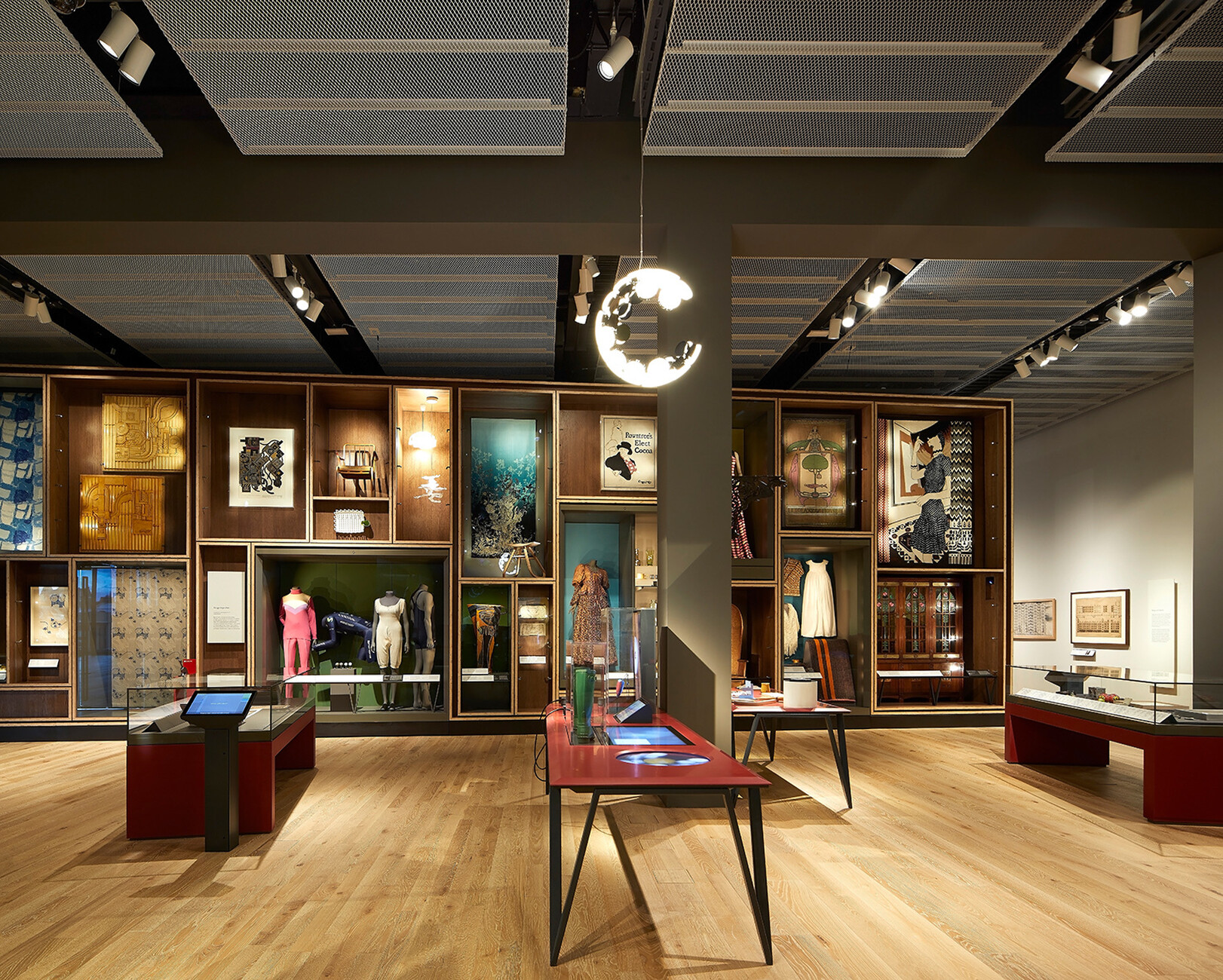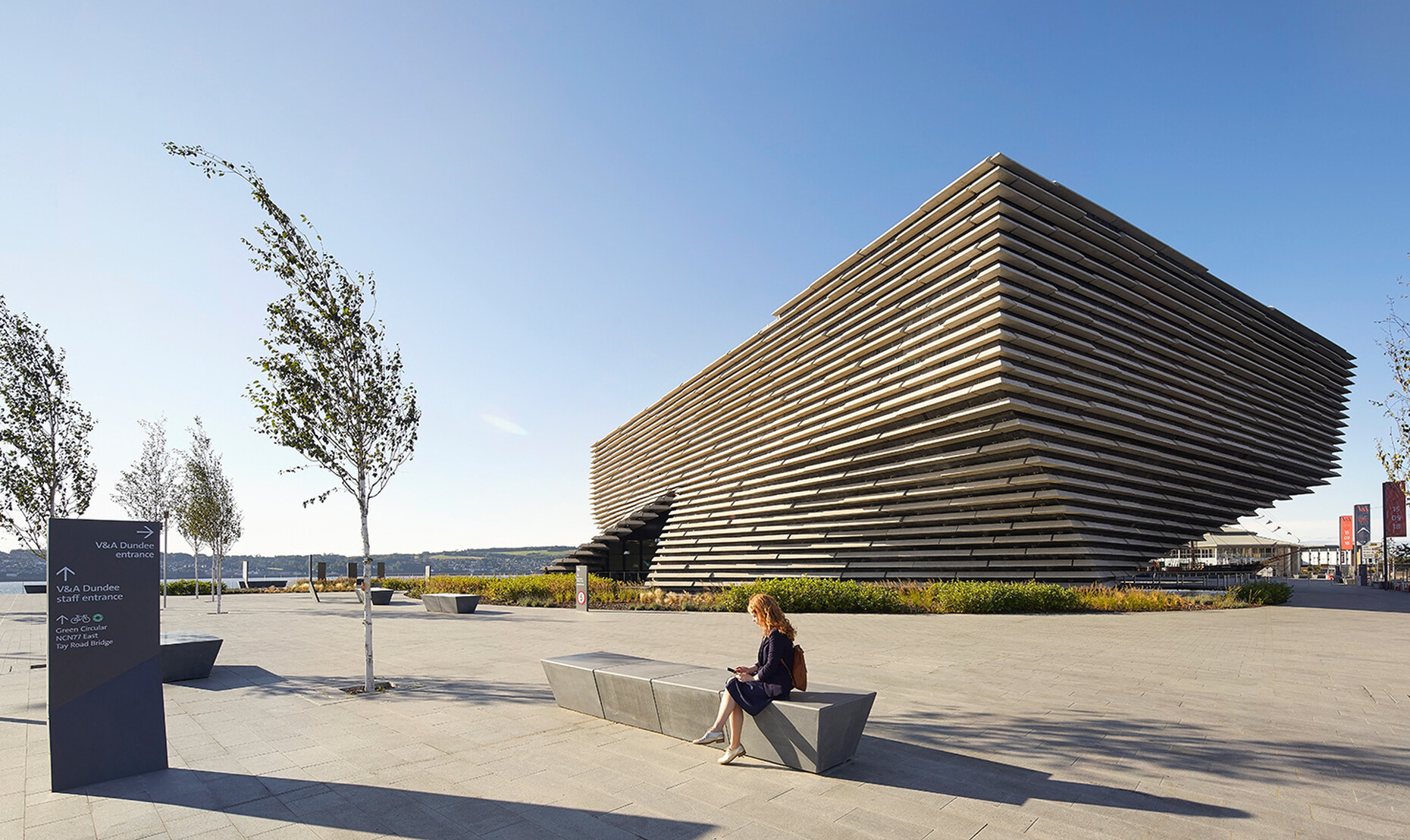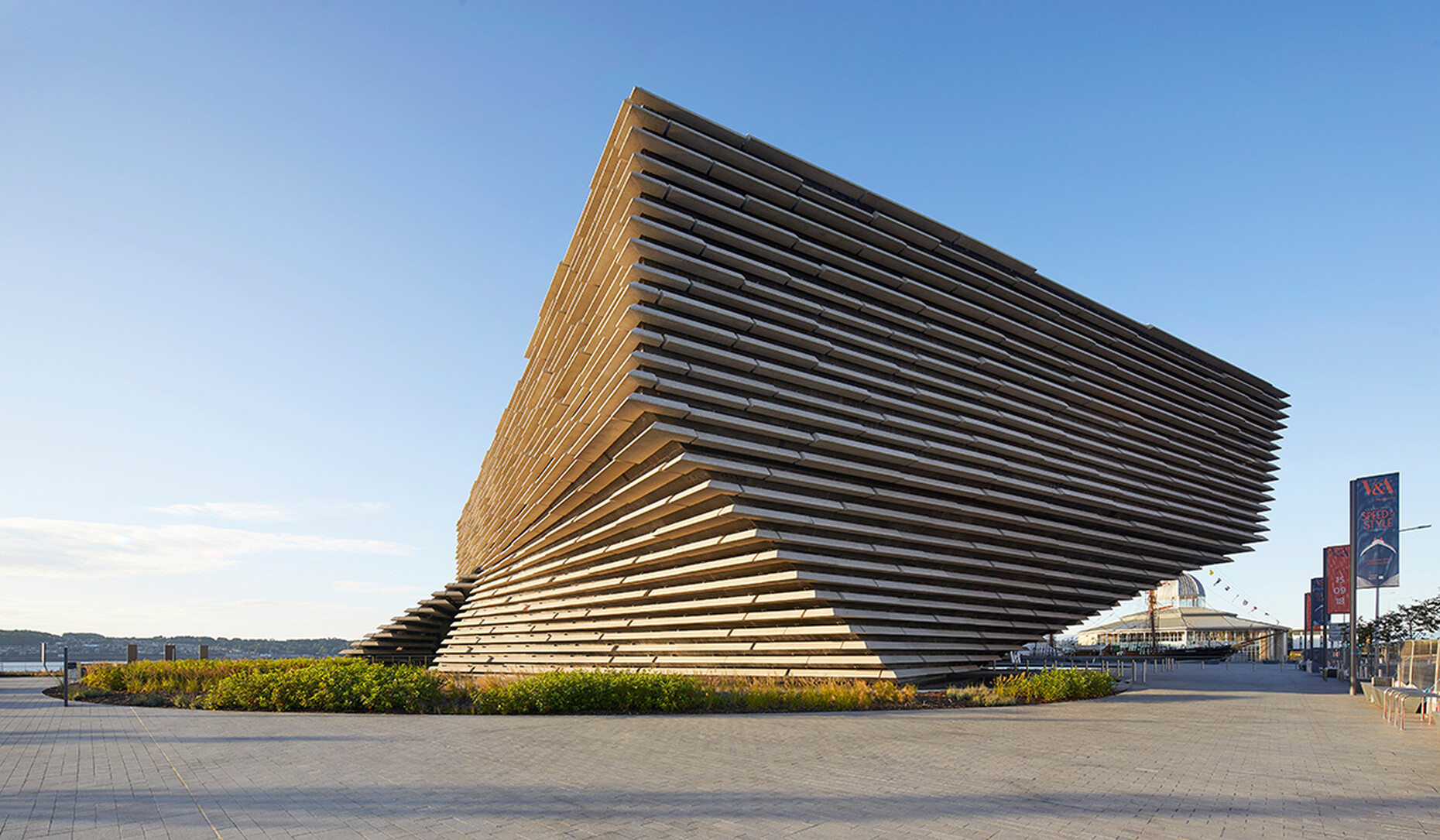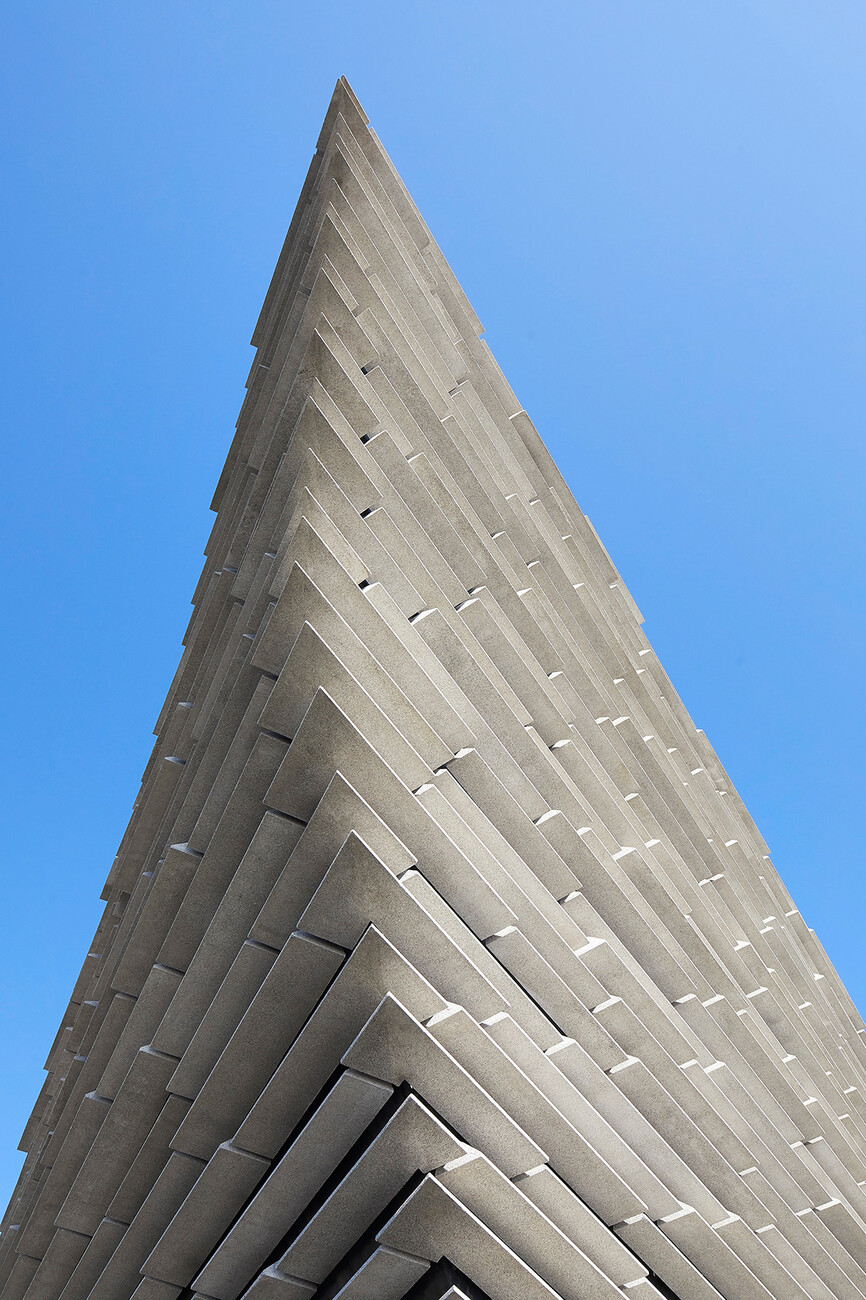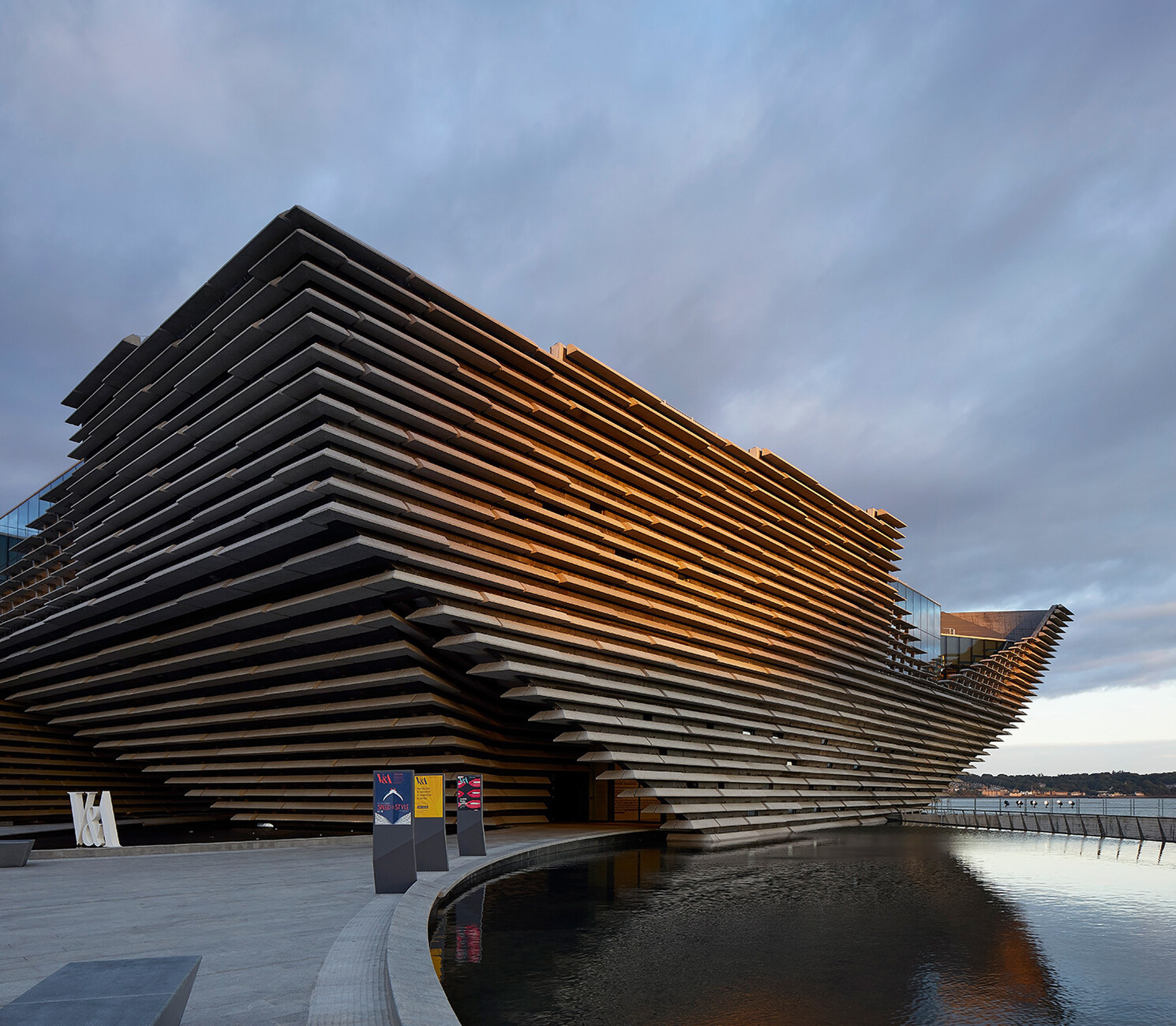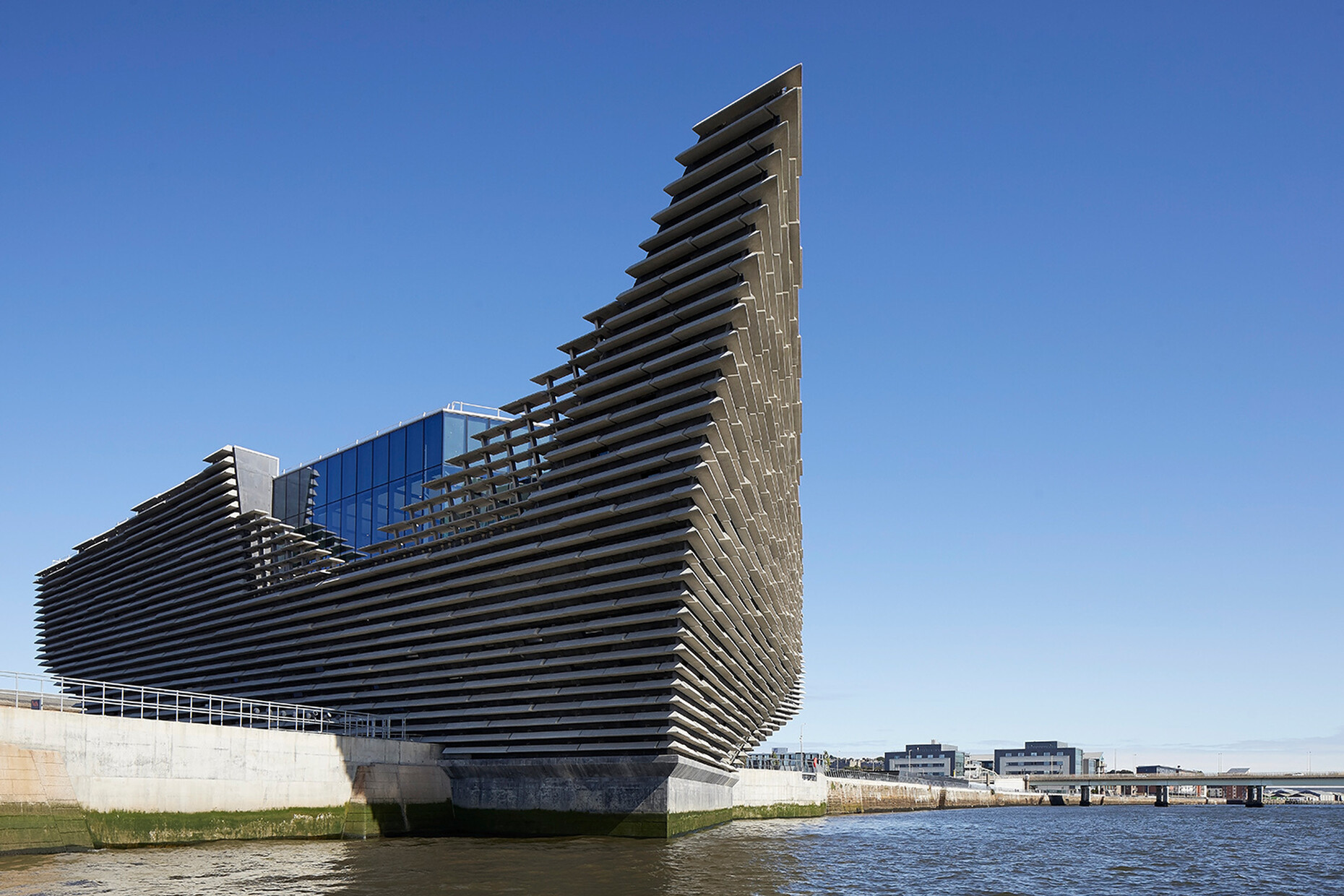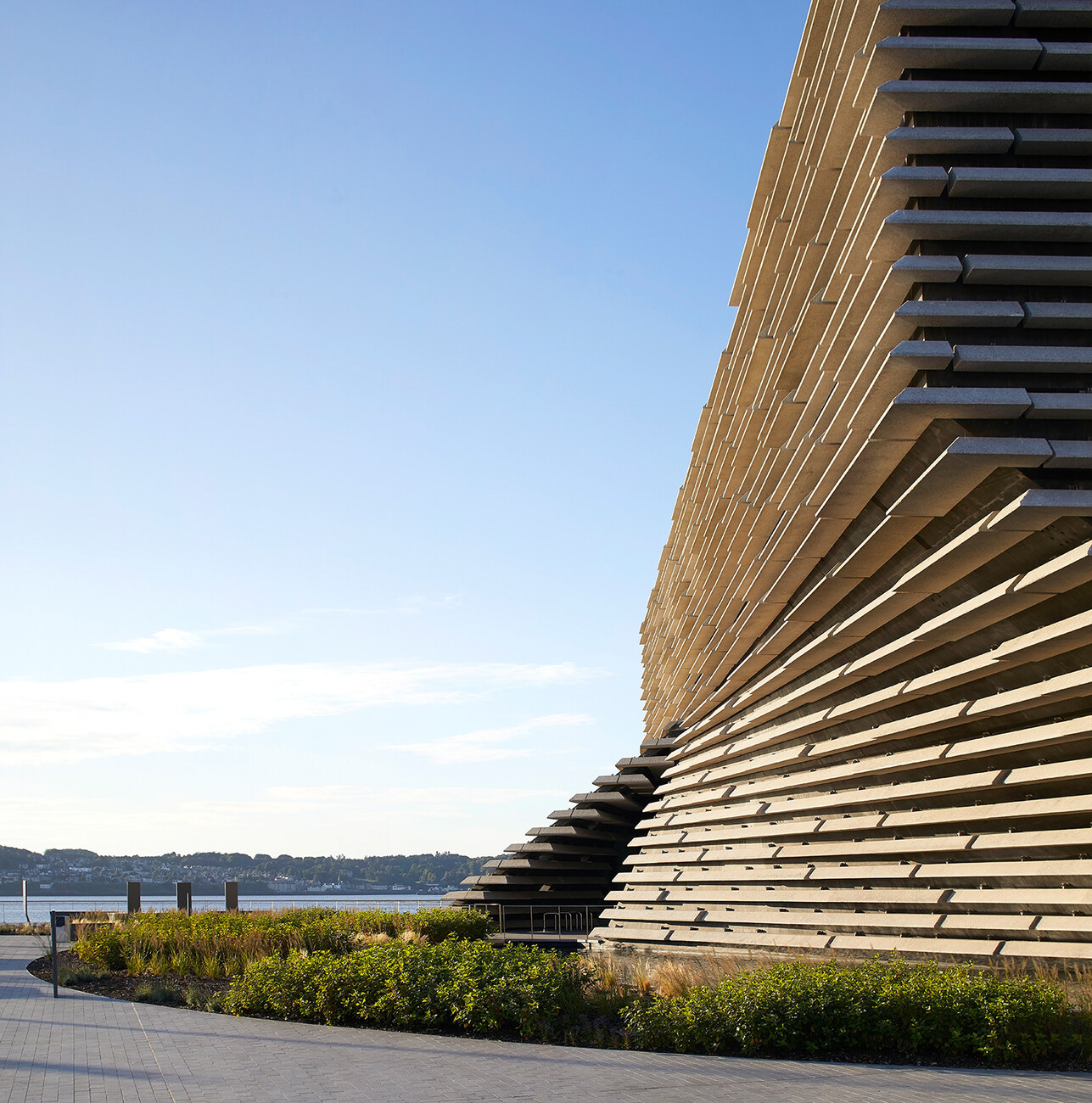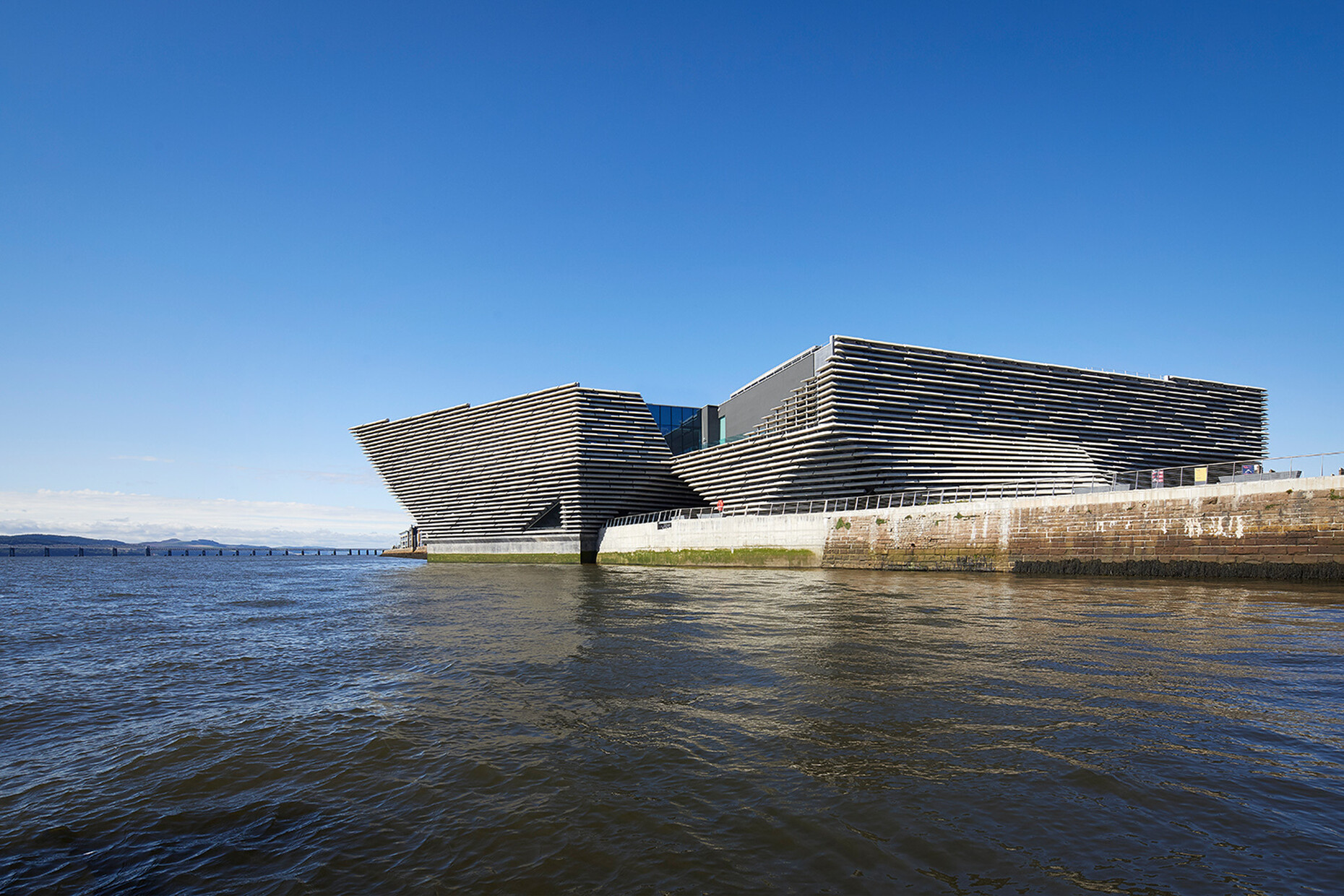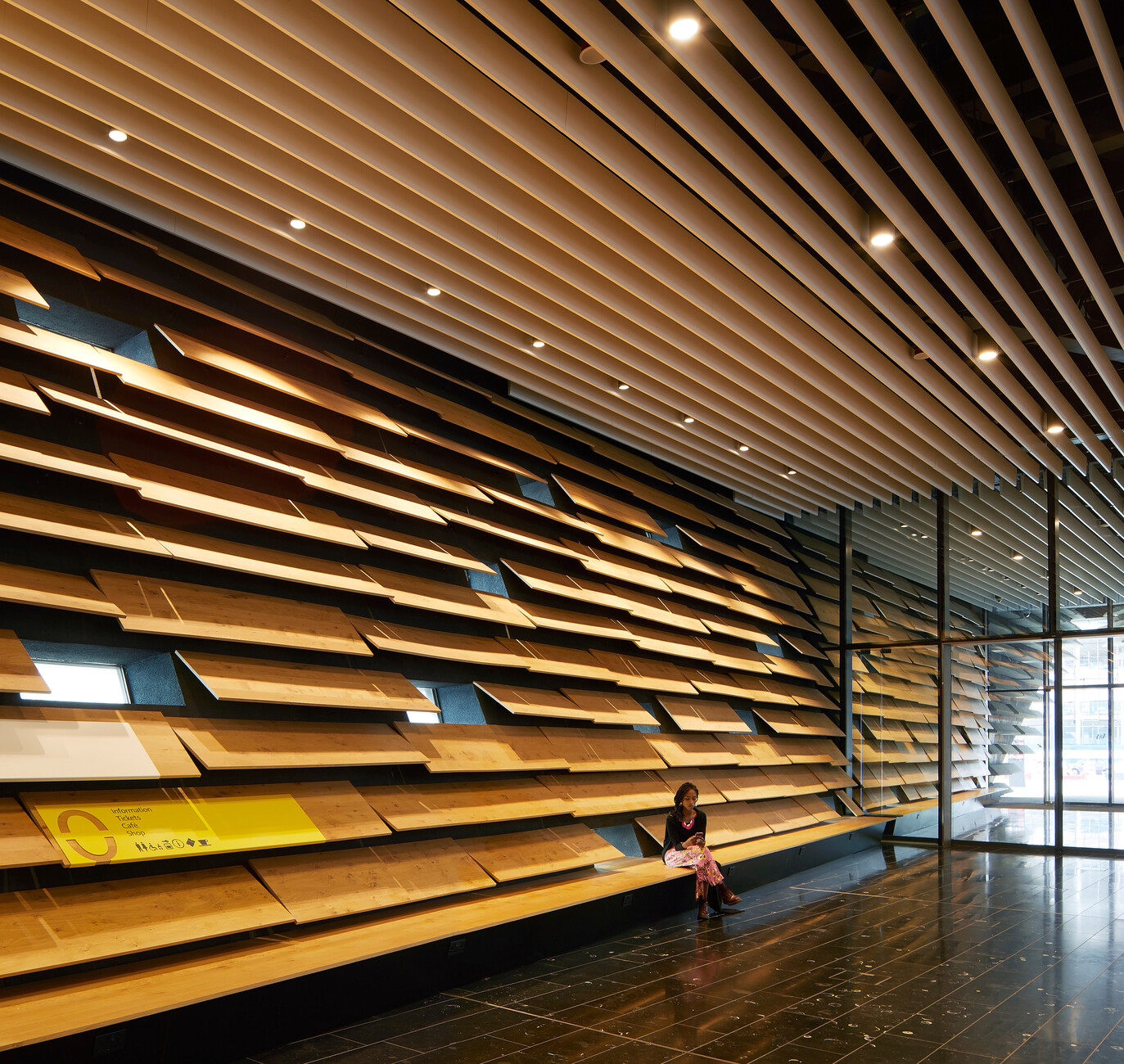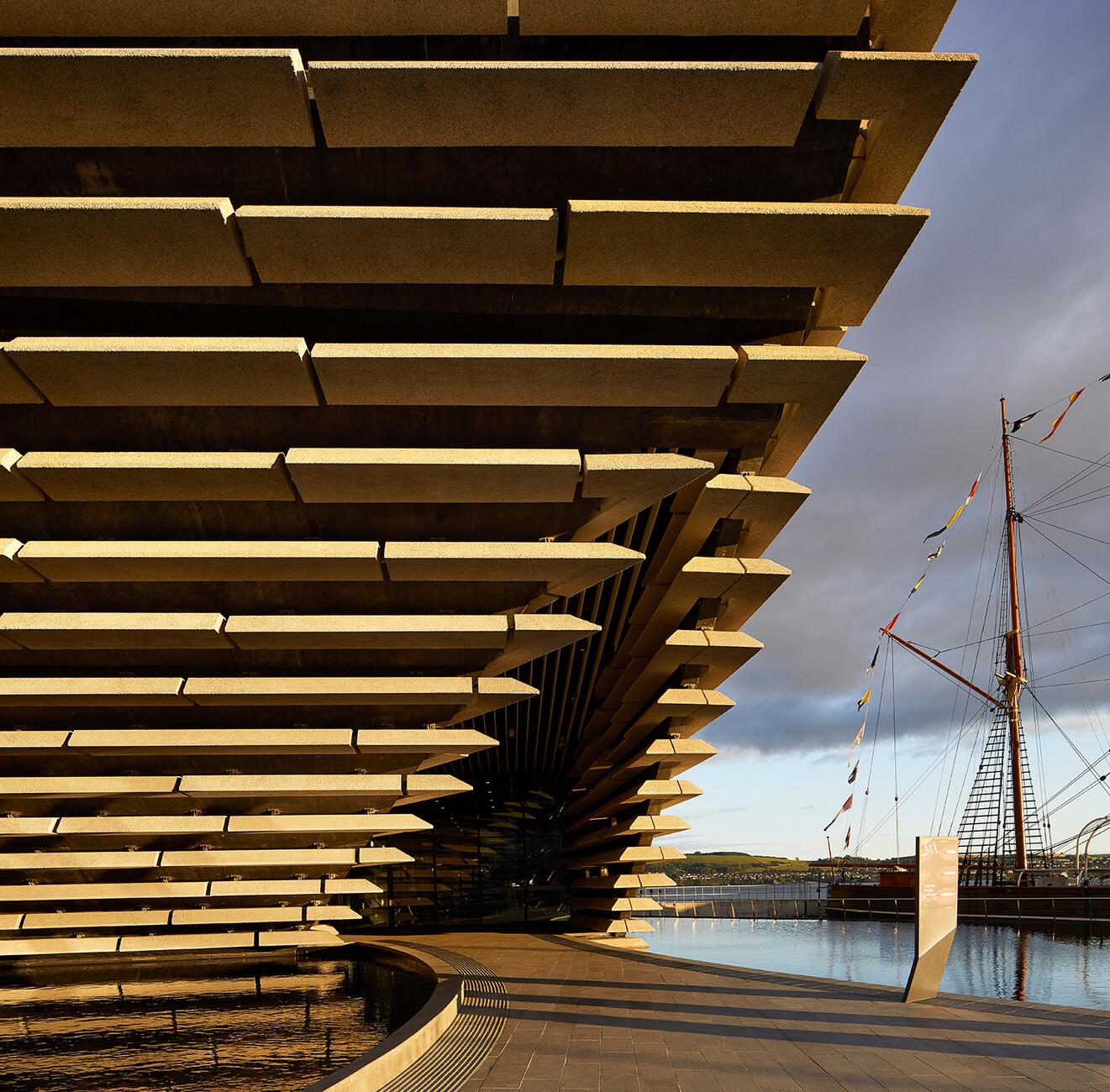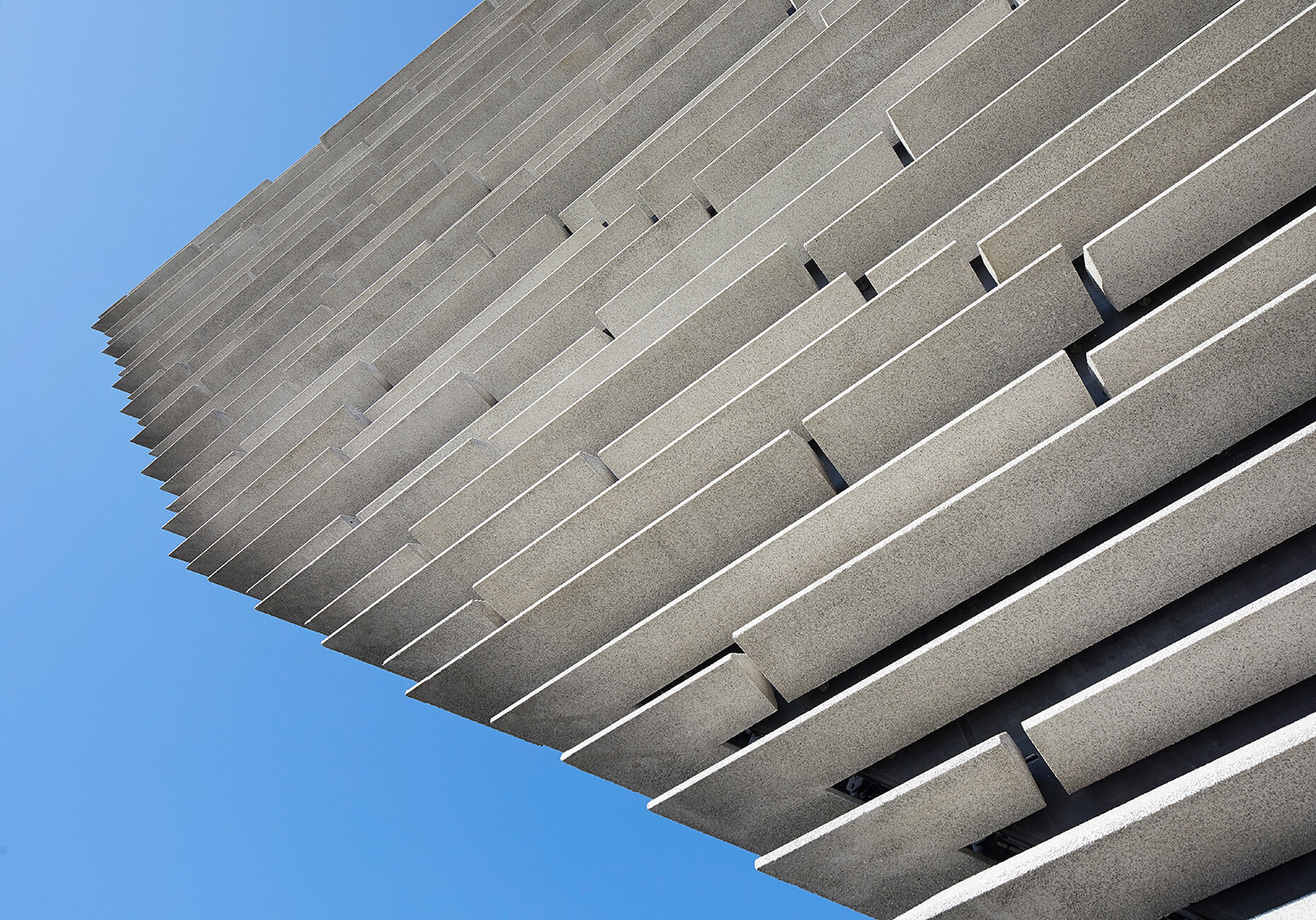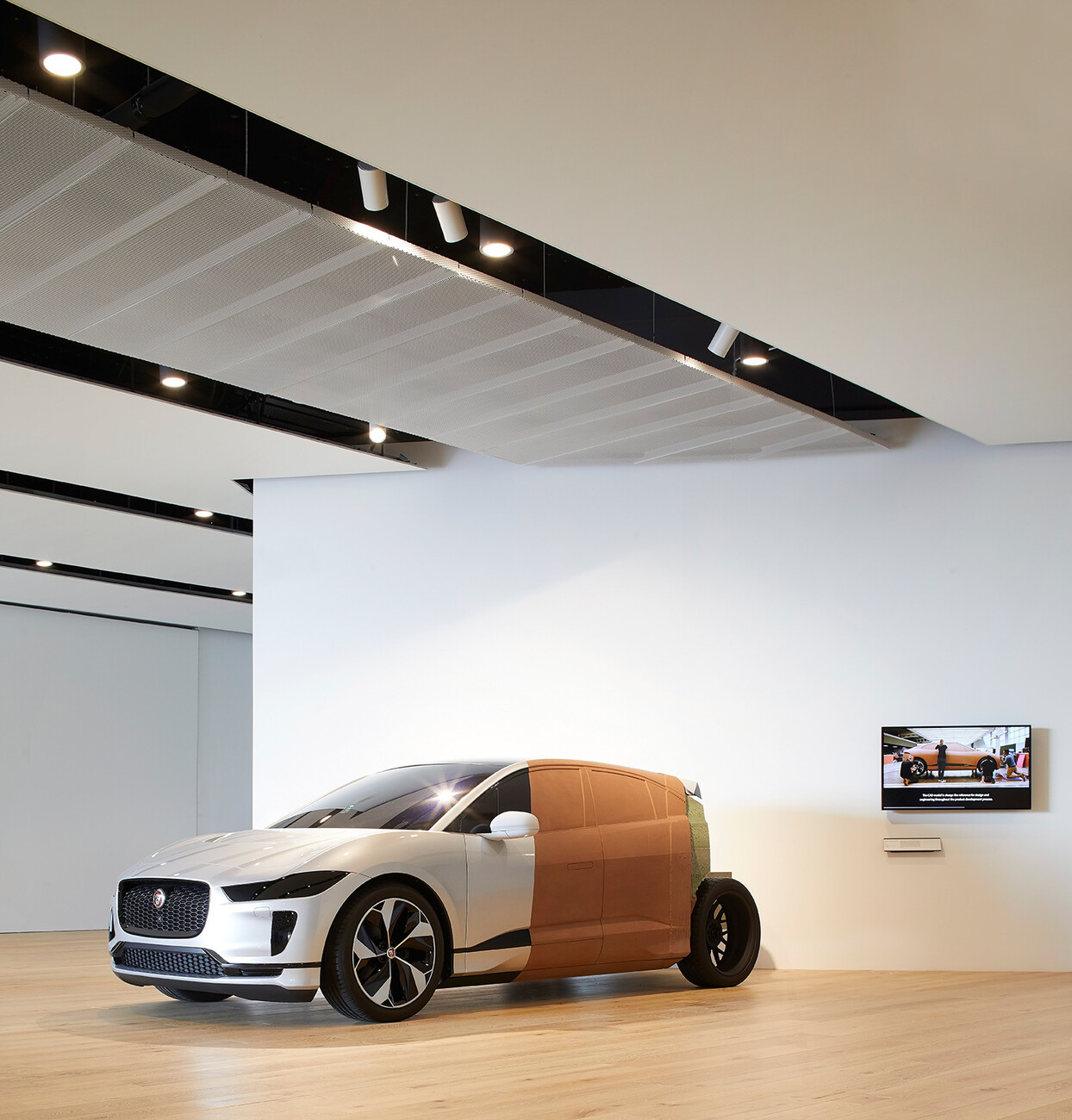Scottish ark
The port of Dundee is home to a well-known ship that made history:The three-masted “RSS Discovery” brought back Ernest Shackleton and Robert Falcon Scott from their famous expedition to the Antarctic in 1901.The ship’s bowline matches the diagonally protruding line of the audacious new building close by – the V&A Dundee, which is the first branch of the Victoria & Albert Museum to be opened outside London.The two blocks that make up the building, which was designed by Japanese architect Kengo Kuma, rise like upturned pyramids and connect to form a homogeneous whole at the top.Kuma used 2,500 prefabricated concrete panels, which were applied horizontally to the protruding external walls of the construction.They structure the façade, making the building appear permeable and removing the solid, monumental character from it.Costing 80.11 million pounds (approx. 90 million euros), the structure took three and a half years to build.It is part of the regeneration program set to transform Dundee’s waterfront and docklands area.
Kuma has consistently applied the lamellar motif of the outer shell to the interior, too: Hundreds of oak boards have been placed over the walls like clapboard, and the wood creates something of a homely feel in the light-flooded inner courtyard.“A living room” is how its creator describes it, designed to make people feel at home – perhaps even safe and sound in its nooks and crannies, which offer ever new perspectives on the expanse of the hall.A staircase that appears almost to hover rises to the upper floor, where the exhibition areas are located. They include the “Scottish Design Galleries,” which host 300 selected examples of Scottish design, with the prize piece being a set of furnishings by Charles Rennie Mackintosh.
So is Kuma concerned that his latest work could fall victim to the Bilbao effect, whereby the shell becomes more important than its contents?Asked in interview, he replies:“I’ve not just created a sculpture for the sake of it;rather, it’s a kind of living room, a place of encounter, which is more a platform than an end in itself.”In the competition held in 2010, the design by Kengo Kuma & Associates was chosen over those of competitors like Snøhetta, REX, Sutherland Hussey Architects, Steven Holl and Delugan Meissl.What made it successful?“It offered a kind of bridge, a link between the old town and the water, which is historically significant for Dundee,” notes the architecture maestro modestly.Would he have come up with a similar design for his home city of Yokohama, which also lies by the sea?“Probably not,” says Kuma, “because here in Scotland the conditions are rougher and more severe.”Thus, as somebody who generally builds with materials like wood, steel and glass, he made an exception this time by choosing resilient concrete.With elements like the freestanding elevator shaft in the interior, however, he has remained true to himself,since its cladding consists of metal rods intertwined with wire, which are visibly permeable and exemplary of Kuma’s masterful playing with structures and textures.Another example are the floors, made of 300 million-year-old Irish midnight-blue limestone.Delicate fossils are trapped in virtually every slab.
In 2014 Dundee became the first ever British city to be designated a “City of Design” by UNESCO:Aspirin was invented here in 1876, 1835 saw the invention of the first electric lightbulb, and later on the city was the birthplace of famous comics, and even later famous video games.In future, the V&A Dundee is set to function as a creative flagship for the fourth-largest city in Scotland and as a platform and launchpad for new ideas.The Wall Street Journal already ranks Dundee among the “five hottest destinations” – and it’s certainly not thanks to the weather.
